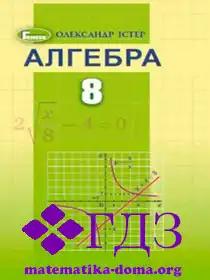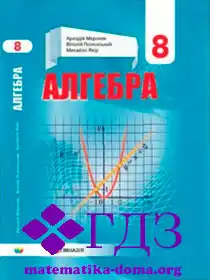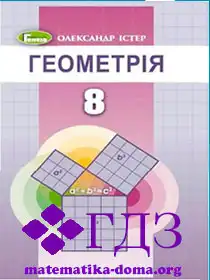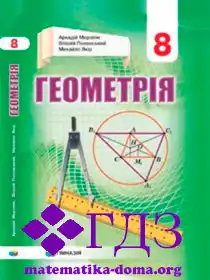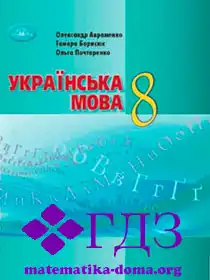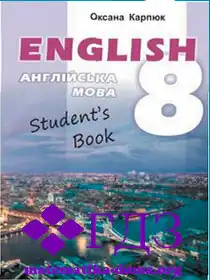ГДЗ до сторінки 115 - Англійська мова 8 клас Стайрінг, Тімз, Робінсон

Автори: М. Стайрінг, Л. Тімз, С. Робінсон.
→ Переглянути зміст до цього ГДЗ ←
Вправа 3 (Listening)
3. Listen to the podcast. Did the presenter ask any of the questions you wrote in Ex. 2? / Прослухайте подкаст. Чи поставив ведучий якісь із запитань, які ви написали у Вправі 2 (стор. 114)? (Аудіювання 96) (Усно)
Приклад усної відповіді (Example oral answer):
Yes, the presenter asked Amelia questions similar to mine. I wrote down, "When did you first become interested in magic?" and the presenter asked, "How did you become interested in magic?". I also wrote, "What are you working on now?" and the presenter asked about her "plans for the future".
(Так, ведучий ставив Амелії запитання, схожі на мої. Я записав(ла): "Коли ти вперше зацікавилася магією?", а ведучий запитав: "Як ти зацікавилася магією?". Я також записав(ла): "Над чим ти працюєш зараз?", а ведучий запитав про її "плани на майбутнє".)
Вправа 4 (Listening)
4. Listen to the podcast. For each question, choose the correct answer. / Прослухайте подкаст. Для кожного запитання оберіть правильну відповідь. (Аудіювання 96)
- Amelia became interested in magic because...
A. her older brother used to enjoy it.
B. she was told she was naturally good at it.
C. she was given a magic set on her birthday. - Amelia's favourite performances have been...
A. at children's parties.
B. in competitions she won.
C. during her time at university. - What does Amelia say about practising tricks?
A. She does it in lots of different places.
B. Her friends aren't interested in helping.
C. It's something she prefers doing alone. - What are Amelia's plans for the future?
A. She wants to be a professional magician.
B. She wants to concentrate on her studies.
C. She wants to work abroad.
Примірні відповіді до аудіювання:
- C. she was given a magic set on her birthday. (вона отримала магічний набір на свій день народження.)
- B. in competitions she won. (у змаганнях, в яких вона перемогла.)
- C. It's something she prefers doing alone. (це те, що вона воліє робити наодинці.)
- B. She wants to concentrate on her studies. (вона хоче зосередитися на навчанні.)
Вправа 1 (Speaking)
1. Look at the photo. How would you feel if you saw someone do this? / Подивіться на фото. Що б ви відчули, якби побачили, як хтось це робить? (Усно)
Приклад усної відповіді (Example oral answer):
If I saw this, I would be amazed! I would think it was incredible. I would find it hard to believe my own eyes. I would probably think it was some kind of trick, but I wouldn't be able to work out how they did it. (Якби я це побачив(ла), я був(ла) б вражений(а)! Я б подумав(ла), що це неймовірно. Мені було б важко повірити власним очам. Я б, ймовірно, подумав(ла), що це якийсь трюк, але не зміг(змогла) б зрозуміти, як вони це зробили.)
Вправа 2 (Speaking)
2. Listen and decide which sentence is true. / Прослухайте та вирішіть, яке речення правдиве. (Аудіювання 97)
- Mark doesn't believe Lucy.
- Lucy doesn't believe Mark.
Примірна відповідь до аудіювання:
a. Mark doesn't believe Lucy. (Марк не вірить Люсі.)
(Люсі, ймовірно, розповідає Марку один із фактів з вікторини 'The No Way! quiz', а Марк використовує фрази недовіри.)
Вправа 3 (Speaking)
3. Read the Prepare to speak box. Then listen again. Which phrases do Mark and Lucy use? / Прочитайте рамку 'Prepare to speak'. Потім прослухайте ще раз. Які фрази використовують Марк та Люсі? (Аудіювання 97)
Примірні фрази з аудіювання:
Lucy (speaking):
- You won't believe this, but...
Mark (disbelieving):
- I find that hard to believe.
- You're joking!
- Are you serious?
- No way!
Вправа 4 (Speaking)
4. Work in pairs. Discuss the quiz questions together. Use the language in the Prepare to speak box. / Працюйте в парах. Обговоріть запитання вікторини разом. Використовуйте фрази з рамки 'Prepare to speak'. (Усно)
The 'No Way!' quiz
- Which two events happened in the same year? (A. The Eiffel Tower was finished, B. Contact lenses were invented, C. The Japanese company Nintendo was started)
- Which law is true in parts of Australia? (A. You are only allowed to own a pet rabbit if you are a magician, B. Cats aren't allowed to make a noise after 9 p.m., C. You must attend classes before you can own a dog)
- When the Mona Lisa was stolen in 1911, who did the police think the thief was? (A. a French poet, B. a museum guard, C. Picasso)
- How thick would a piece of paper be if you folded it in half 42 times? (A. about 2 metres, B. as tall as a house, C. enough to reach the moon)
- Which two people were born in the same year? (A. Marilyn Monroe, B. Queen Elizabeth II, C. Pele, the footballer)
Приклад діалогу (Example dialogue):
Student A: OK, let's try question 1. Which two happened in the same year? The Eiffel Tower, contact lenses, or Nintendo.
Student B: I'm not really sure, but I think the Eiffel Tower (A) and Nintendo (C) might be from a similar time. Contact lenses (B) sound more modern.
Student A: Let's check... (Checks Ex. 5) Wow. You won't believe this, but all three (A, B, and C) happened in the same year, 1889!
Student B: You're joking! That just isn't possible. Contact lenses in 1889? No way!
Student A: Are you serious? That's what it says!
Student B: OK, my turn. Question 4. How thick is paper folded 42 times? (A) 2 metres, (B) as tall as a house, (C) enough to reach the moon.
Student A: It must be (B) as tall as a house. (C) is impossible.
Student B: (Checks Ex. 5) It's (C)! Enough to reach the moon.
Student A: I find that hard to believe. Are you sure? That's amazing.
Вправа 5 (Speaking)
5. Turn to page 137 and check your answers. Which answers surprised you the most? / Перейдіть на сторінку 137 і перевірте свої відповіді. Які відповіді здивували вас найбільше?
Відповіді до вікторини (Quiz Answers):
- A, B, and C. (The Eiffel Tower was finished (March 1889), contact lenses were invented (1888/89), and Nintendo was founded (September 1889).)
- A. (In Queensland, Australia, it is illegal to own a pet rabbit unless you are a magician.)
- A and C. (Police arrested the poet Guillaume Apollinaire, and they also questioned Picasso. The real thief was Vincenzo Peruggia, a museum employee.)
- C. (A piece of paper 0.1mm thick folded 42 times would be 0.1mm * 2^42, which is over 400,000 km thick. The moon is approx. 384,000 km away.)
- A and B. (Marilyn Monroe (June 1926) and Queen Elizabeth II (April 1926) were born in the same year. Pele was born in 1940.)
Які відповіді здивували найбільше?
I was amazed by question 4. I can't believe my eyes that a piece of paper can reach the moon. That just isn't possible! Also, the answer to question 1 is surprising; I thought contact lenses were a modern invention. (Я був вражений запитанням 4. Не можу повірити своїм очам, що аркуш паперу може досягти місяця. Це просто неможливо! Також, відповідь на запитання 1 дивовижна; я думав, що контактні лінзи - це сучасний винахід.)
Теоретична довідка
Навички Говоріння: Вираження подиву та недовіри (Speaking: Expressing surprise and disbelief)
Ця сторінка вчить вас, як реагувати на дивовижну, шокуючу або важку для сприйняття інформацію. Це важлива частина природної розмови.
Ключові фрази (Prepare to Speak):
Коли ви говорите щось дивовижне:
- You won't believe this, but... (Ти не повіриш, але...)
Коли ви реагуєте на дивовижну новину (з недовірою):
- I find that hard to believe. (Мені важко в це повірити.)
- You're joking! (Ти жартуєш!)
- Are you serious? (Ти серйозно?)
- No way! (Не може бути!)
- I can't/couldn't believe my eyes. (Я не можу/міг повірити своїм очам.)
- That just isn't possible. (Це просто неможливо.)
Ці фрази використовуються в розмові, щоб показати ваші емоції (amazed, confused, surprised). Вони є ключовою частиною неформального спілкування, пов'язаного з темами Формальна та неформальна мова та Стосунки та конфлікти.

